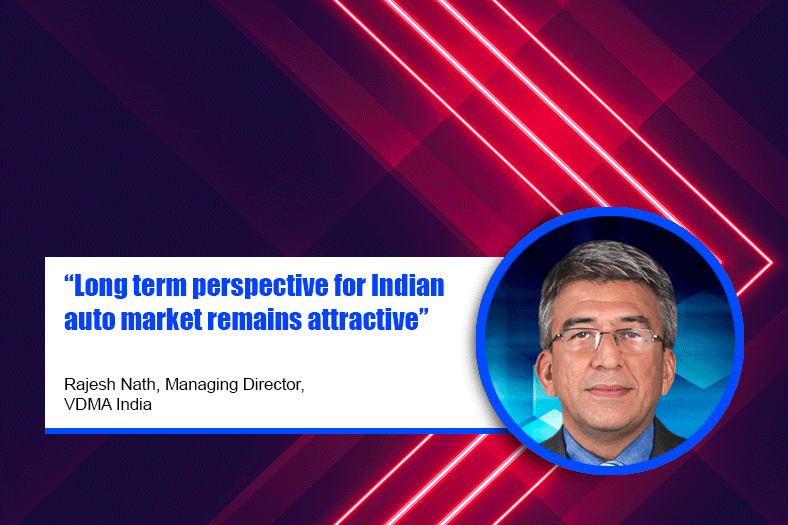“Long term perspective for Indian auto market remains attractive”
By OEM Update Editorial July 3, 2020 10:44 am
Making better vehicles with space and convenience would be ruling the market.
Rajesh Nath, Managing Director, VDMA India
In an interview with OEM Update, Rajesh Nath, Managing Director, VDMA India outlines the changing dynamics of India’s automotive industry. Excerpts:
India is expected to be the world’s third largest automotive market in terms of volume by 2026. Is the growth target still intact?
India became the fourth largest auto market in 2018 with sales increasing 8.3 per cent year-on-year to 3.99 million units. India was the world’s fourth largest manufacturer of cars and seventh largest manufacturer of commercial vehicles in 2019.
Indian automotive industry declined Y-o-Y by 18 percent in FY 2020, nearing FY 2016-17 levels. Commercial vehicle segment declined the most at (-) 29 percent, followed by passenger vehicle and 2 wheelers segment at (-) 18 percent. A few demand inhibitors, which is pointed out are declining consumer spend, NBFC crisis and BS IV to BS VI transition. Due to the lockdown in April-May2020, auto industry reported zero sales in April and just 37,000 PVs sold in May, against monthly sales equivalent of 2,50,000 units. This has impact the demand and is expected to contract by 29-32 percent in FY2021.
In FY19, year-on-year growth in domestic sales among all the categories was recorded in commercial vehicles at 17.55 per cent followed by 10.27 per cent year-on-year growth in the sales of three-wheelers.
However, India has a potential to be the world’s third-largest automotive market in terms of volume by 2026 with 7.4 million vehicles. Indian automotive industry (including component manufacturing) is expected to reach Rs 16.16-18.18 trillion (US$ 251.4-282.8 billion) by 2026.
Which factors will drive the growth?
Two-wheelers and passenger vehicles dominate the domestic Indian auto market, owing to a growing middle class and a young population. Passenger car sales are dominated by small and mid-sized cars. Two-wheelers and passenger cars accounted for 80.8 per cent and 12.9 per cent market share, respectively, accounting for a combined sale of over 20.1 million vehicles in FY20. Moreover, the growing interest of the companies in exploring the rural markets further aided the growth of the sector.
The growing demand for electric mobility will bring more innovations and different kind of players like software and technology providers to plunge into the automobile industry, according to the report. It also says that the new operators will disrupt the conventional automobile industry further in coming days.
However, due to the virus and the social distancing requirement, the shared mobility drive may now shift and people may start buying their personal cars. This may increase the demand in the entry level cars and used cars. However on the other side with the salary cuts and the job losses, the desire to buy will get balanced by the capacity to buy.
COVID-19 pandemic has derailed growth of almost every industry. What steps to be taken by Indian automotive companies to revive growth?
Indian market thrives on a differentiated segment of customers. These are the ones who drive demand and bring huge incremental sales and growth. It’s the class of businessmen, traders, entrepreneurs or the rural markets, which normally drive sales. However, in today’s scenario, this is the class that is the worst affected set of customers looking for conserving their resources.
The silver lining would be a new set of vehicles and the digital sales that would garner focus in the times to come. Making better vehicles with space and convenience would be ruling the market. Despite the above challenges, considering India’s comparatively low vehicle penetration – 110 two-wheelers and 32 cars per 1,000; combined with a young population, rapid improvements in road infrastructure, growth in rural demand and possible introduction of entry-level passenger cars, the long term perspective for Indian auto market remains attractive.
Cookie Consent
We use cookies to personalize your experience. By continuing to visit this website you agree to our Terms & Conditions, Privacy Policy and Cookie Policy.
















